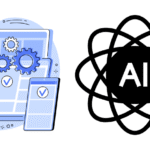
The Difficulties of Cross-Platform App Development: Unmasking the elusive challenges lurking beneath surface simplicity. Journey with us through this technological labyrinth.
Cross-platform app development refers to the process of creating mobile applications that can run on different platforms, such as iOS and Android. While the concept seems simple enough, the reality is that developing a cross-platform app comes with its own set of challenges.
Developers need to have expertise and a deep understanding of cross-platform app development to navigate these complexities successfully. With that in mind, let’s take a closer look at the challenges faced by developers in creating multi-platform apps.
Compatibility Issues
Cross-platform app development presents unique challenges, particularly when it comes to compatibility issues. While developing an app that can run on multiple platforms offers significant benefits, it requires a deep understanding of the intricacies of each platform and how it interacts with the code.
For instance, iOS and Android have different coding languages and program architectures. Apple iOS apps are written in Objective-C or Swift, while Android apps are written in Java. In addition, each platform has its own design guidelines and conventions.
| Platform | Screen Sizes | Resolutions | Input Methods |
|---|---|---|---|
| iOS | 4.7 inches – 6.7 inches | 750×1334 – 1125×2436 | Touchscreen |
| Android | 4 inches – 6.7 inches | 480×800 – 1440×3040 | Touchscreen, physical buttons |
These differences create challenges for cross-platform app developers. Compatibility issues may arise when the same code runs on different platforms, affecting the functionality and performance of the app. It’s important to run thorough tests and debugging to ensure compatibility across platforms.
Example:
“Despite our efforts to make the app compatible with both iOS and Android, we encountered several compatibility issues during the development process. The app would crash on certain devices, or functionalities would not work as expected. We had to go back and spend time debugging and fine-tuning the code to ensure cross-platform compatibility.”
Despite the challenges, cross-platform app development remains a popular choice for developers looking to maximize app reach across platforms.
User Interface Design
Designing a user interface that effectively works across multiple platforms is arguably the most challenging aspect of cross-platform app development. Developers have to consider the variations in screen sizes, resolutions, and input methods to ensure a consistent and intuitive user experience.
One of the key challenges in designing a cross-platform user interface is the need to balance platform-specific design guidelines with the overall app’s consistent branding. While each platform has its own set of design guidelines, sticking too closely to these guidelines can lead to a disjointed user experience across platforms. Instead, developers must strive to create a consistent user interface that leverages the strengths of each platform while maintaining a cohesive brand identity.
Another challenge in cross-platform user interface design is the limited ability to leverage platform-specific features. While native apps can fully utilize the features of their respective platforms, cross-platform apps have to make trade-offs and often cannot implement certain platform-specific features. This can limit the app’s functionality and user experience and requires developers to find alternative solutions to achieve the desired functionality.
User Interface Design Best Practices
To overcome the challenges of cross-platform user interface design, developers should follow these best practices:
- Research and understand platform-specific design guidelines but prioritize the app’s overall branding and user experience.
- Design a flexible and responsive interface that can adapt to different screen sizes and resolutions.
- Utilize consistent typography, colors, and branding elements to maintain a cohesive user experience.
- Consider using a cross-platform design toolkit or framework to streamline the design process and ensure consistency across platforms.
- Test the app thoroughly across each platform to ensure a consistent and intuitive user experience.
Performance Optimization – The Difficulties of Cross-Platform App Development
In cross-platform app development, performance optimization is a crucial aspect that requires careful consideration. The varying performance capabilities of different platforms can affect the overall performance of the app. Developers must use appropriate optimization techniques to ensure that the app runs smoothly on all devices.
One of the primary challenges of performance optimization in cross-platform app development is the need to develop and test for multiple platforms. Each platform may require different optimization techniques, which makes the development process more complex. However, using cross-platform development tools that support multiple platforms can help simplify this process.
Another challenge is the varying hardware capabilities of different devices. This can significantly impact the performance of the app and affect the overall user experience. Developers must take into account the hardware specifications of the target platforms and optimize the app accordingly.
To achieve optimal performance in cross-platform app development, developers can utilize several strategies. One approach is to use a native-like user interface framework that provides a consistent user experience across all platforms. Developers can also reduce the app’s size by minimizing the use of multimedia and graphics, as well as utilizing code minification and compression techniques.
Lastly, thorough testing and debugging are crucial for identifying and resolving performance issues. Developers must test the app on different devices and platforms to ensure that it performs well across all of them. They must also use appropriate debugging tools to identify and fix performance issues.
Access to Native Features

One of the major challenges in cross-platform app development is accessing native features of specific platforms. Since every platform comes with unique features, APIs, and development tools, accessing them across all platforms can be a daunting task for developers.
Developers often have to navigate around these platform-specific features to create a cross-platform app that delivers seamless functionality across multiple platforms. The use of plugins and other alternatives can help developers compensate for these limitations.
Unfortunately, in certain cases, access to native features may not be possible in cross-platform development. This can affect the performance and functionality of the app, leading to a suboptimal user experience. However, with careful planning and smart utilization of plugins or other alternatives, developers can create a cross-platform app that is just as functional and user-friendly as a native app.
The Difficulties of Cross-Platform App Development
Code Maintenance and Updates
One of the significant challenges in cross-platform app development is code maintenance and updates. Any changes or updates made to the code in one platform may impact the functionality and compatibility of the app across other platforms. As a result, developers need to ensure that the code is well-organized and scalable to minimize the impact of updates.
Additionally, it is crucial to keep track of the different versions of the app across various platforms and ensure that they remain compatible. This requires a thorough understanding of the app’s codebase and the specific requirements of each platform.
Tip: Regular testing and debugging of the app across all platforms can help identify and address compatibility issues early, minimizing the need for extensive code changes later on.
Development Time and Cost – The Difficulties of Cross-Platform App Development
Cross-platform app development can increase both development time and cost due to the need to develop and test for multiple platforms. Compared to developing natively, cross-platform development can extend the development timeline and increase costs. However, there are strategies developers can use to manage these constraints.
Firstly, it is essential to have a thorough understanding of the platforms being developed for and to make informed decisions about which features are essential and which can be prioritized. This can help developers allocate resources more effectively and streamline the development process.
Secondly, utilizing frameworks and tools that support cross-platform development can save time and reduce costs. These tools can provide pre-built components and modules, as well as facilitate testing and debugging across different platforms.
Finally, employing agile development methodologies can help developers manage time and cost constraints by breaking down development into smaller, more manageable tasks and allowing for more flexibility in the development process.
The Difficulties of Cross-Platform App Development
Cross-platform app development presents a unique set of challenges that developers must navigate to create apps that run seamlessly on multiple platforms. Among these challenges are compatibility issues, user interface design, performance optimization, access to native features, code maintenance and updates, security concerns, and user experience considerations.
Security Concerns
Security is a critical consideration in cross-platform app development, particularly when integrating with multiple platform-specific security measures. The complexity of this task can complicate the development process, making it important to employ robust security practices and thorough testing to mitigate security risks. Developers should also prioritize regular updates and patches to address any newly identified vulnerabilities.
It is important to note that security concerns are not limited to the development stage alone. Security risks can arise when users download the app and interact with it, and therefore developers must ensure they take measures to protect user data post-deployment.
User Experience Considerations
Creating a seamless user experience across multiple platforms is one of the biggest challenges in cross-platform app development. The variations in platform-specific guidelines and capabilities can affect the overall user experience. Therefore, developers need to ensure that the app works seamlessly across all devices and platforms.
Here are some strategies for delivering a consistent user experience:
- Use a common design language that is consistent across platforms
- Optimize the app’s performance to provide a smooth experience on all platforms
- Utilize responsive design to ensure the app adapts to different screen sizes and resolutions
- Test the app thoroughly on all devices and operating systems to ensure there are no issues with performance or compatibility
- Ensure that the app conforms to platform-specific guidelines to provide a more native-like experience
“Cross-platform app development presents a unique challenge when it comes to user experience. However, with the right strategies, it is possible to deliver a seamless experience that works well across multiple platforms.”
Designing for Different Input Methods
Developers need to consider the different input methods for different platforms when designing the app’s user interface. For example, touchscreens are the primary input method for mobile devices, while desktop computers have mouse and keyboard input. Developers need to ensure that the app is optimized for the different input methods to ensure a consistent and intuitive user experience.
Another factor to consider is the navigation of the app. Users can move around the app through touch gestures, keyboard shortcuts, or mouse clicks. Developers need to ensure that the navigation is optimized for each platform’s input methods to provide a seamless experience.
Performance Comparison with Native Apps
One of the most common questions in cross-platform app development is how the performance of these apps compares to native apps developed for specific platforms. While performance can vary based on the complexity of the app and the specific platforms targeted, there are some general considerations to keep in mind.
Native apps are generally faster: Since native apps are developed specifically for a single platform, they can take advantage of platform-specific features and optimizations that can improve performance. In many cases, native apps can also take advantage of hardware features that are not accessible through cross-platform development tools.
However, cross-platform apps can still perform well: While cross-platform development may not offer the same level of optimization as native development, it is still possible to create apps that perform well across multiple platforms. By prioritizing performance optimization throughout the development process and leveraging modern cross-platform development tools, developers can create high-quality apps that perform well on a variety of devices and platforms.
Factors That Can Impact Cross-Platform App Performance
Several factors can impact the performance of cross-platform apps, including:
| Factor | Description |
|---|---|
| App complexity | The more complex an app is, the more resources it will require to run smoothly. Cross-platform development tools may struggle to keep up with complex apps, potentially resulting in reduced performance. |
| Target platforms | Different platforms have different optimization requirements. Apps that are optimized for one platform may not perform as well on other platforms. |
| Cross-platform development tools | The quality of the Cross-platform development tools used to build an app can impact its performance. High-quality tools that are regularly updated can produce better performance results. |
Overall, while native apps may have an advantage in terms of performance, cross-platform development can still produce high-quality apps that perform well across multiple platforms.
FAQs – The Difficulties of Cross-Platform App Development

Here are some of the most commonly asked questions about cross-platform app development:
Q: What programming languages are used in cross-platform app development?
A: There are many programming languages and frameworks available for cross-platform app development. Some of the most popular ones are React Native, Xamarin, Flutter, and Ionic.
Q: What are the benefits of cross-platform app development?
A: Cross-platform app development allows developers to create apps that can run on multiple platforms, which can save time and reduce development costs. It can also improve the user experience by providing a consistent design and functionality across different devices.
Q: What are the drawbacks of cross-platform app development?
A: Cross-platform app development can be challenging due to compatibility issues, limitations on accessing native features, and potential performance trade-offs compared to developing natively. It also requires a strong understanding of different platforms and their unique requirements.
Q: How do I ensure my cross-platform app works well on all platforms?
A: Thorough testing and debugging are essential for ensuring compatibility across platforms. As well, developers should consider variations in screen sizes, resolutions, and input methods to create a consistent and intuitive user experience.
Q: How long does it take to develop a cross-platform app?
A: The development time of a cross-platform app depends on various factors such as the complexity of the app, the number of features, and the number of platforms targeted. However, cross-platform development can generally be faster than developing natively for each platform separately.
Q: How do I minimize the cost of cross-platform app development?
A: There are several strategies for minimizing the cost of cross-platform app development, such as leveraging open-source tools and libraries, using reusable code components, and minimizing platform-specific customizations. However, these cost-saving measures should not compromise the quality of the app.
Q: How do I ensure the security of my cross-platform app?
A: Robust security practices and thorough testing are crucial for ensuring the security of a cross-platform app. Developers should also be knowledgeable about the different security measures of different platforms and integrate them into the app as necessary.
William is a highly accomplished technical author specializing in cross-platform app development. With a rich background in the tech industry, he has worked at prestigious companies like Uber and Facebook, where he honed his skills as an iOS developer since 2009. Throughout his career, William has been an advocate for leveraging frameworks like React Native and Xamarin to create innovative and efficient cross-platform mobile apps.
Having pursued a degree in Computer Science and Mathematics at Caltech, William is equipped with a strong educational foundation. Currently residing in LA with his two daughters, he finds solace in exploring the scenic hills through hiking. Passionate about knowledge sharing, William not only builds cutting-edge applications but also takes pleasure in teaching students how to develop their own cross-platform mobile apps. His expertise, combined with his dedication to empowering others, makes him an invaluable asset in the field of app development.







